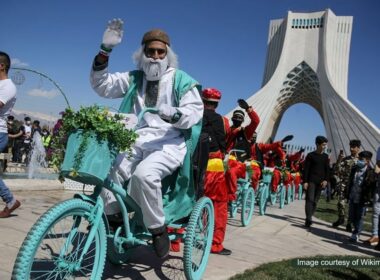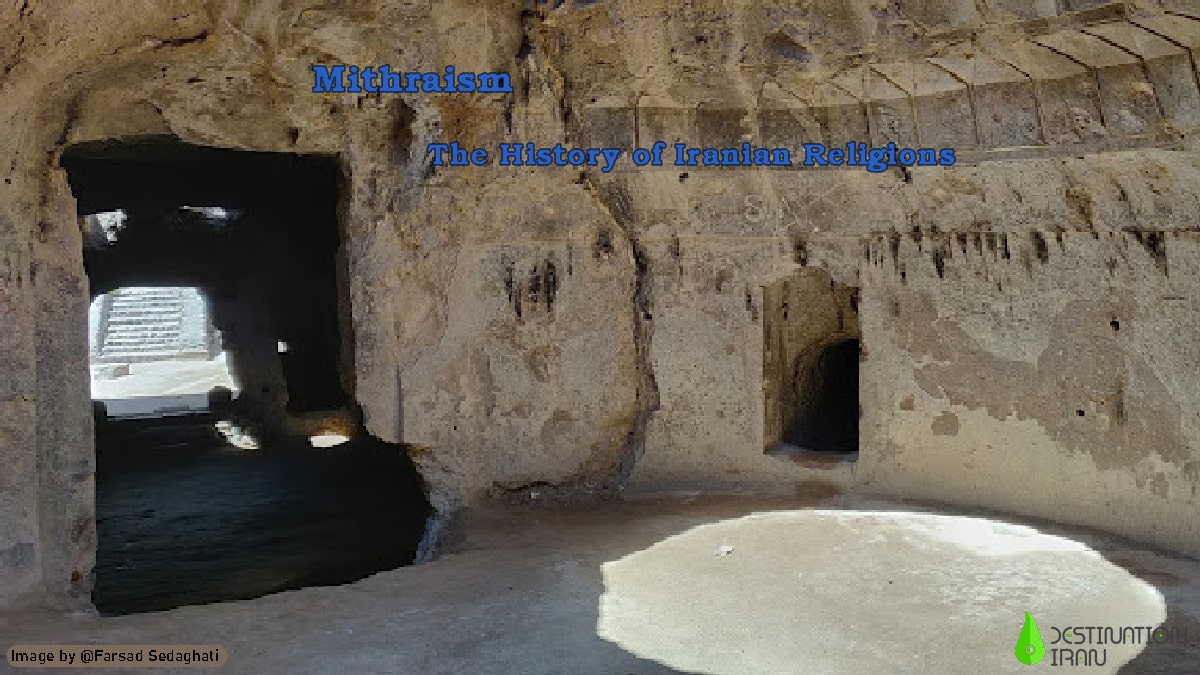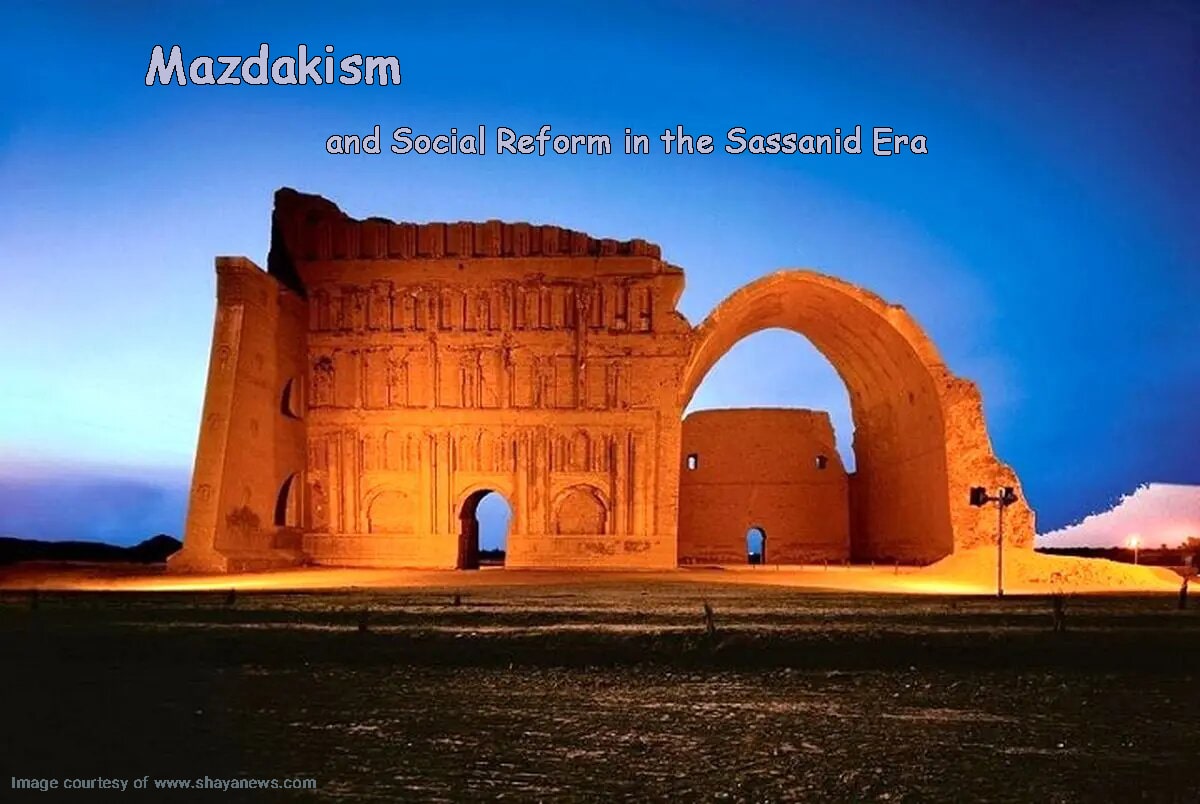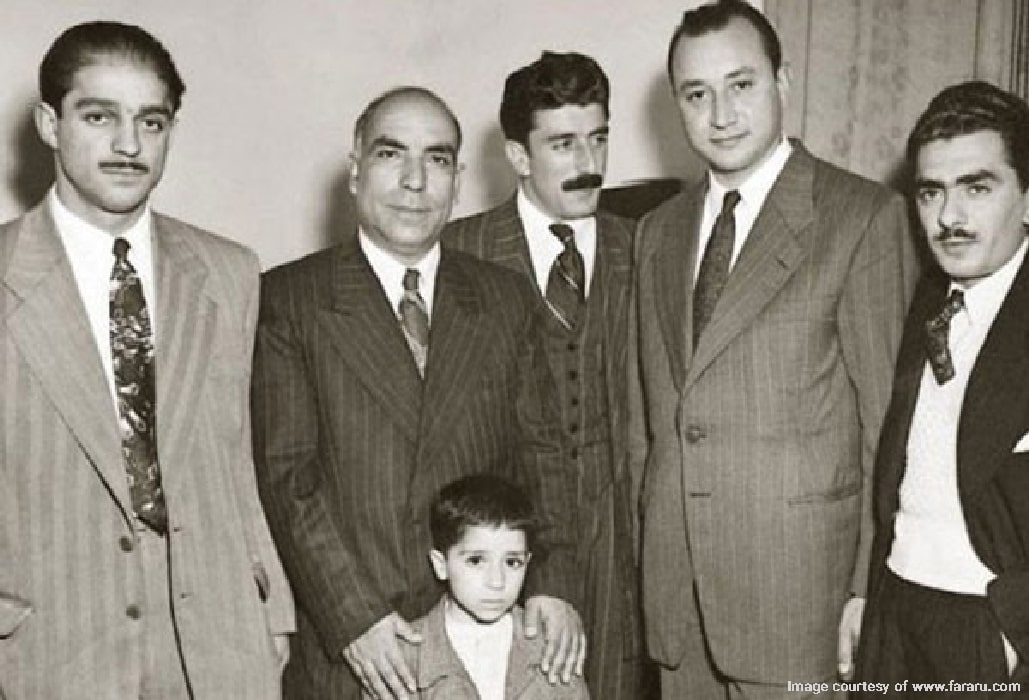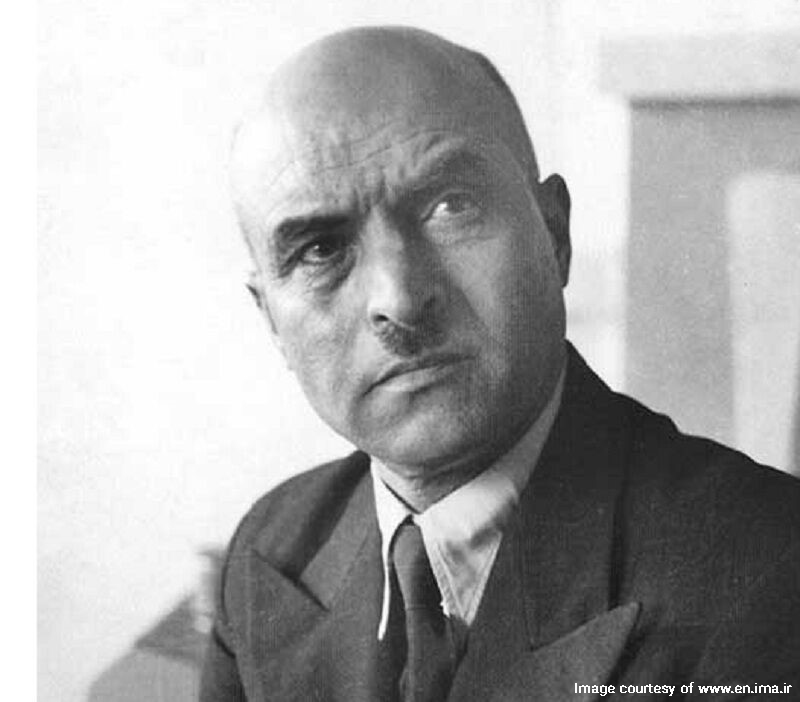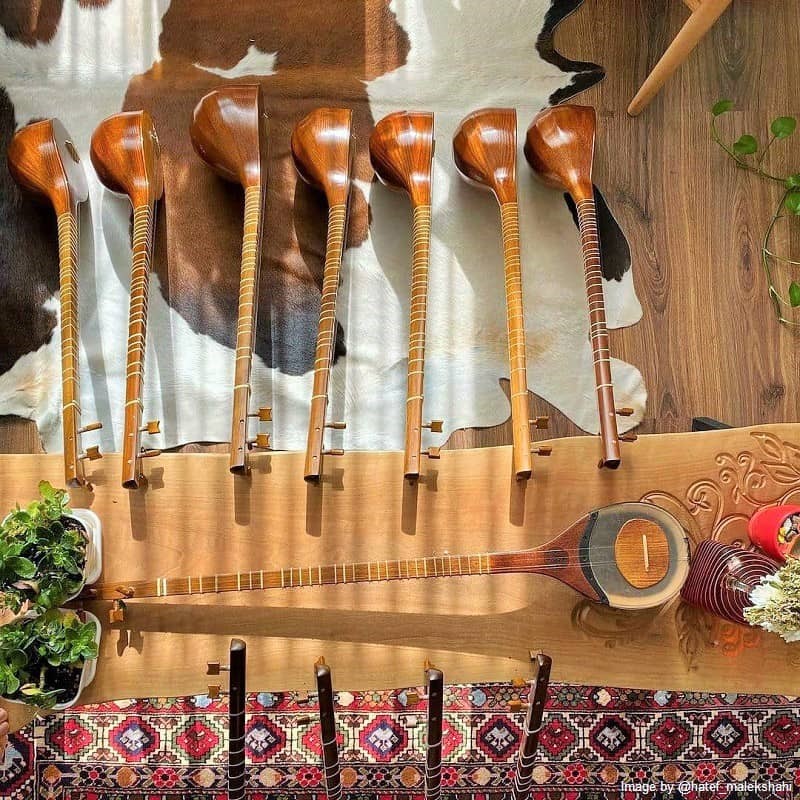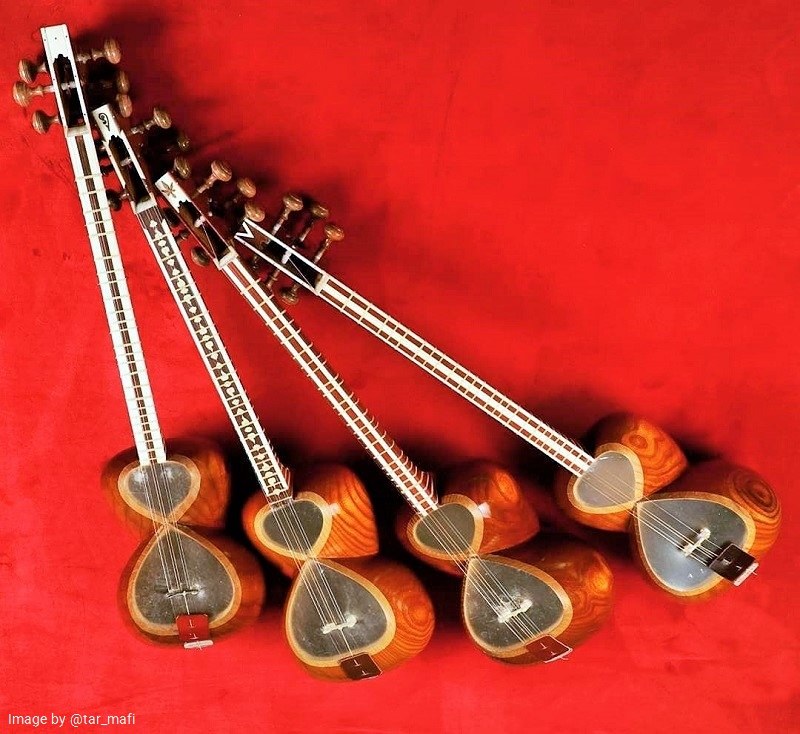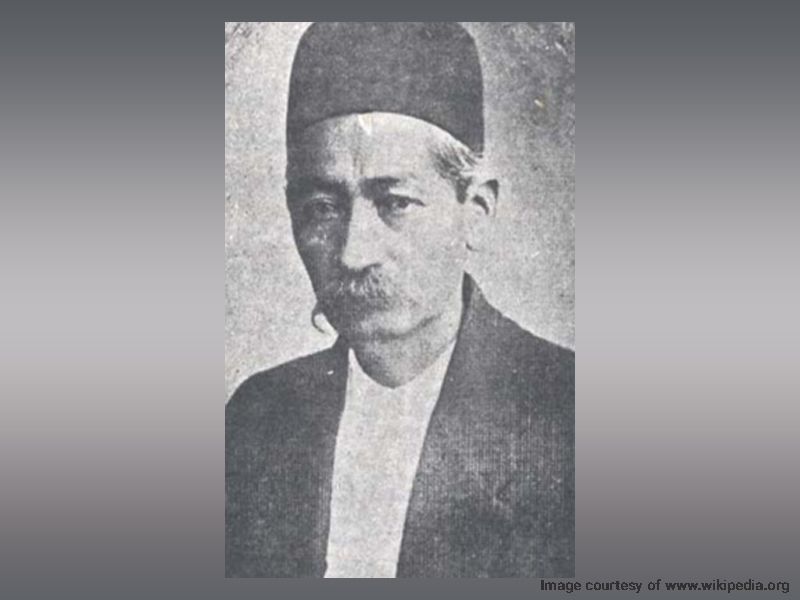
Gholam Hossein “Darvish Khan” was a master of the Tar and Setar instruments and an influential art figure in the late Qajar period. He tutored many students who would shape the 20th century, such as Ali-Naghi Vaziri. He is credited for establishing the Introduction section in Iranian traditional music.
Gholam Hossein Darvish Khan Biography
Darvish Khan was born in Tehran in 1872. His father was Haji Bashir from the Zidasht village in Taleqan, and his mother was a Turkmen woman from the Teke tribe. His father would usually call him Darvish, which is the reason for his famous nickname and surname. Haji Bashir was a Setar player, and Gholam Hossein learned his first Setar lessons from him. His father encouraged him to attend the Dar ul-Funun school at age 10.
He studied under Alfred Jean Baptiste Lemaire, the French musician, who introduced him to musical notation and taught him how to play classical scales on the bugle instrument and the drum. Lemaire was a master of martial music, which allowed Darvish Khan to become adept at Western beats.
After Dar ul-Funun, Darvish Khan became a student of Davood Kamili to master the classical Tar instrument. Shortly after, he surpassed his teacher and became a renowned Tar player. His true education began with the tutelage of Mirza Hossein-Qoli and his older brother Mirza Abollah Farahani. They were considered the top Tar and Setar masters of the late Qajar period.
Darvish Khan’s Professional Career
Darvish Khan was a small-drum player in the music bands of Malijak II, Nasser al-Din Shah’s nephew, and Kamran Mirza Nayeb es-Saltaneh, the third son of Nasser al-Din. His proficiency with the Tar led Nasser al-Din Shah to nickname him “Tarchi” (Tar player).
After the assassination of Nasser al-Din Shah in 1896, he was invited to the court of Malek Mansur Mirza Shoa as-Saltaneh, the governor-general of Fars and the second son of Mozaffar ad-Din Shah Qajar. There, he married a girl from Shiraz and had a daughter named Qamar.
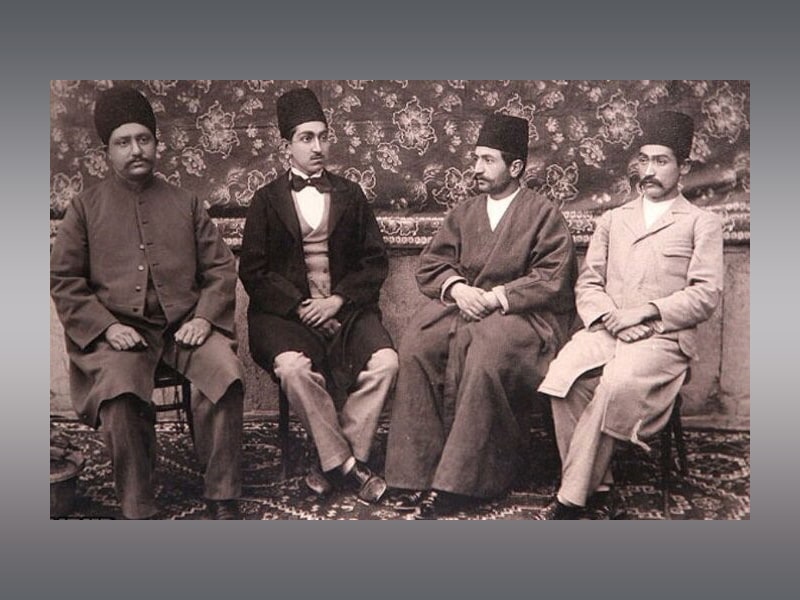
The allowance from Shoa as-Saltaneh’s court did not suffice the expenses of Darvish Khan. Therefore, he started tutoring private lessons to the nobles. Upon realizing this, Shoa al-Saltaneh grew very angry with Darvish Khan and ordered his servants to cut off his fingers. Fortunately, Kamal al-Saltaneh (Gholam Hossein’s friend and the father of Abolhasan Saba), pleaded with Shoa al-Saltaneh to change his mind.
Escape from Shoa al-Saltaneh’s Court
After falling out of Shoa al-Saltaneh’s favor, Darvish Khan travels to Tehran where he offers private classes to music enthusiasts. However, he was still in the service of Shoa al-Saltaneh and lived in fear of his retribution. After learning of Darvish Khan’s disdain, Shoa al-Saltaneh sends one of his agents to Tehran to retrieve him.
Darvish Khan seeks refuge in the home of Abbas Qoli Khan, the caretaker of the British embassy. He befriends the British ambassador who is amazed by his musical talents, especially in playing the piano. The British ambassador sends a letter to Shoa al-Saltaneh to convince him to free Darvish Khan from his service. Mansur Mirza Shoa al-Saltaneh agrees, marking a new chapter in Darvish Khan’s professional career.
Anjoman-e Okhovat
Gholan Hossein became a disciple of Mirza Hasan Esfahani (Safa Ali Shah), a Sufi mystic. During the Constitutional Revolution, Darvish Khan joined the Anjoman-e Okhovat, a Freemason-like brotherhood with Sufist philosophy.
The organization was publicly established by Ali Zahir al-Douleh, a disciple of Safa Ali Shah. Darvish Khan became the lead of the Brotherhood’s orchestra and remained in his role for the rest of his life.
Darvish Khan’s Contribution to Iranian Traditional Music
Darvish Khan traveled abroad twice to record his songs on a gramophone. His first trip was during the Minor Tyranny around 1910. He traveled to London through Russia.
In London, he recorded songs with a major British record label “His Masters Voice” along with other artists. He was accompanied by several musicians including Moshir Homayoun, Seyed Hassan Taherzadeh, Hossein Hang-Afarin, Reza Qoli Khan, Bagher Khan Rameshgar, and Asad Allah Khan.
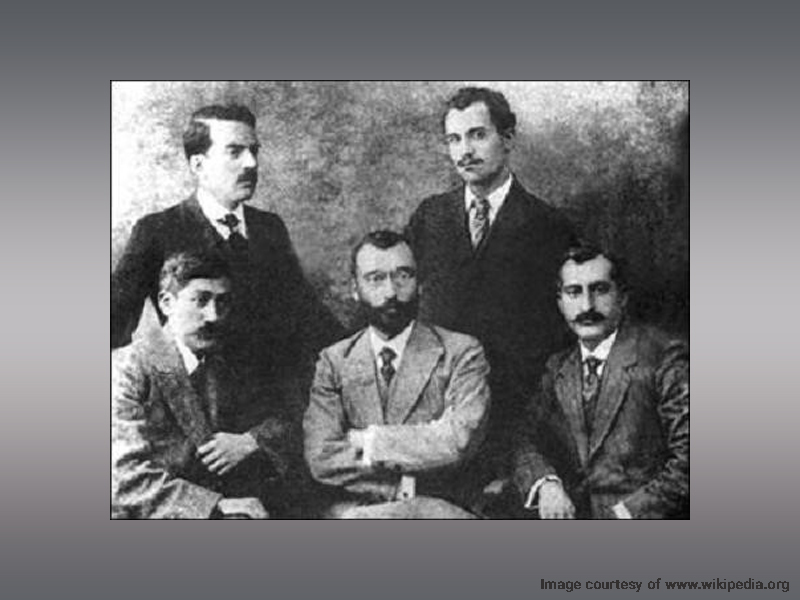
His second trip was to Tbilisi in 1914. He was accompanied by Bagher Khan Rameshgar, Iqbal al-Soltan, and Abdollah Davami. They recorded songs with the Davidoff record label. The records were sent to Berlin, but due to World War I complications, only a few were sent back to Tehran later. They also set up concerts in Tbilisi for Iranian residents there.
Darvish Khan educated many influential Iranian musicians in his lifetime, including Abol-Hasan Saba, Mousa Maroufi, Hossein Sanjari, Abdollah Dadvar, Ali Mohammad Safai and many more.
Darvish Khan’s Innovation in Persian Traditional Music
He was the first artist to compose new songs in traditional styles based on Western musical theory. Many consider his work the first significant innovation in Iranian traditional music.
He realized the monotone style in Persian traditional music. He summarized the beat-less vocals in traditional music and added the introduction (prelude) section with new rhythms, some of which were inspired by Western rhythms.
After he realized the unfair record deal with His Master’s Voice label, Darvish Khan started to promote his new style. By the time the records were distributed in Tehran, they were obsolete. Everyone wanted to listen to the new style with introductions.
Darvish Khan added a sixth white string to the Tar, which expanded the instrument’s tone and created new tunes. He called this string “Sheh” (Six), which is placed between the yellow and the bass strings.
Darvish Khan’s Famous Works
He left a total of six introductions, eleven “Rang” (Iranian traditional musical form), and several sections.
His introduction (prelude) sections include:
- Mahoor
- Abu Ata (First)
- Abu Ata (Second)
- Se Gah
- Shushtari
- Afshari
- Raak (Mahoor)
His most famous Tasnifs are:
- Bahar-e Delkash
- Ze Man Negaram
- Daen Mah-e Man
- Sobhdam Ze Mashregh
- Aroos-e Gol
- Bad-e Khazan
The poems for his Tasnifs were written by Mohammad-Taqi Bahar, a renowned Iranian poet.
Darvish Khan died on Wednesday, November 24, 1926, in an automobile accident. This is the first recorded death by an automobile accident in Iran. His chariot crashed with a Ford car and he was thrown out of the cabin and hit his head against the pavement. He died in the hospital five days later due to his injuries.
Learn More About Iranian Traditional Music
Iranian traditional music is one of the most valuable intangible cultural heritages of Iran. It has influenced Iranian culture and social identity to a great extent. By learning more about its developments, you can better understand the evolution of Iranian contemporary art.
Frequently Asked Questions About Darvish Khan
If you have any more questions about Gholam Hossein Darvish Khan or the history of Iranian traditional music, let us know in the comments. We will respond as soon as possible.
Who is Gholam Hossein Darvish Khan?
He is one of the most influential musicians of 20th-century Iran. He created a new section in traditional music called Pish-Daramad (Introduction) and added a new string to the Tar classical instrument. His efforts in promoting Iranian traditional music led to its popularity in the Qajar period and later.
What is Darvish Khan famous for?
His innovation in Iranian music led to a new age in Persian traditional music, which included devising a new section, new musical forms, and upgrading the Tar to expand its scale. He divided the Iranian Dastgah (modal scales) into seven sections and made understanding traditional music easier for Western musicians.
Who is the first victim of an automobile accident in Iran?
Darvish Khan was the first person to ever die as a result of an automobile accident in Iran. His chariot crashed into a motor vehicle, and he died in the hospital a few days later as a result of head trauma.



